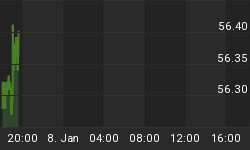by Doug Wakefield with Ben Hill
"I just found out there's no such thing as the real world; just a lie you've got to rise above." - John Mayer, "No Such Thing"
On October 3rd, 2006, a Foxnews.com headline read, "Dow Jones Industrial Average Surges to New All-Time High, Closes at Record." Likewise, on October 12th, 2006, CNNMoney.com published an article titled, "Dow up Nearly 100 to All Time High." Though they both mentioned "reasons" for this phenomenon, neither alluded to the growth of the money supply.
But, what do news headlines really tell us? Are they indicative of rational investors looking at the entire economic and corporate landscape and surmising that stocks must climb higher in order to correctly reflect their true future value? Do they really reflect the collective wisdom of millions of rational investors, advisors, and managers? Should we all be content with pure market index returns, knowing that if we are diversified we'll end up far better off than those who are arrogant enough to think beyond today's headlines to the future?

Source: The Investor's Mind: January 2006
This chart was presented in our January 2006 Investor's Mind. Today, if we look only at "the bottom line" and the recent past, then we would come to the conclusion that this chart, and any warnings from our 2004 and 2005 writings, is of little or no value to investors. After all, the market has spoken, and its "collective wisdom" bespeaks smooth sailing, so the "negative perceptions" of the naysayers need not distract us.
But has anything of historic significance happened since this chart was produced? Will the wonderful tool of fiat currency, by which the fearless leaders of modern capitalism navigate, continue in an unending stream of liquidity? Or will the dam (of) debt one day block their "forward" progress?
 The money measures in the table to the right were taken directly from the Federal Reserve, who, until February of this year, had been publishing said numbers each month. If we click on the link, we begin to gain the historical perspective. In January of 1959, the first date in this data series, the money supply stood at $292 billion. By February of 2006, it had grown 3,419 percent to $10,276 billion. Since 2000 the money supply has grown 55 percent and it has grown by $764 billion in the last twelve months.
The money measures in the table to the right were taken directly from the Federal Reserve, who, until February of this year, had been publishing said numbers each month. If we click on the link, we begin to gain the historical perspective. In January of 1959, the first date in this data series, the money supply stood at $292 billion. By February of 2006, it had grown 3,419 percent to $10,276 billion. Since 2000 the money supply has grown 55 percent and it has grown by $764 billion in the last twelve months.
So, why did the Fed stop producing this number? The Fed announcement stated that the, "Board judged that the costs of collecting the underlying data and publishing M3 outweigh the benefits." But, why would the "cost" of producing anything be a concern for an agency that creates an additional $764 billion of debt in 12 months? This is like telling your spouse that you are going to make an additional $100 million in income next year, but that you've decided that the cost of paying a maid to clean your home appears to "outweigh the benefits." Call me cynical, but I doubt your spouse would buy it. The chart at the beginning of this article makes it apparent that the Dow's new high is hollow. Even more disconcerting is the fact that many are paying for yesterday's debt with today's debt. Clearly, this is not the path to an ever-stronger economy.

Since the Federal Reserve has decided that it cannot justify the cost of producing this number, I have found it necessary to turn to others, like John Williams at Shadow Government Statistics, to stay abreast of the speed at which this "little" number is growing.
While some public figures believe that "there is a concerted effort to make it appear that the economy is bad," the data, revealed in these charts, shows the opposite to be true. If we have money in the financial markets, we'd best look at these numbers that we've been told are not worth the cost of collecting. I hope that you will ponder this and then act for your own benefit.
To read some of our other postings and learn about our educational services, we encourage you to visit our website. Our industry research paper on short selling, Riders on the Storm: Short Selling in Contrary Winds, is available to those who subscribe to our monthly newsletter, The Investors Mind: Anticipating Trends through the Lens of History.
















